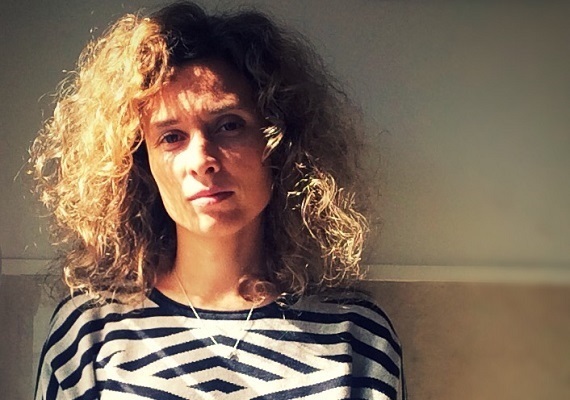Diana Toucedo • Director
“I champion long research processes”
- BERLIN 2018: With Thirty Souls, presented in Berlin’s Panorama, Spanish filmmaker Diana Toucedo walks us through the harmonious coexistence of life and death in her homeland

Editor Diana Toucedo, who also teaches at the Pompeu Fabra University, the UAB and ESCAC, is presenting her new film in the Panorama section of the 2018 Berlinale, after helming the documentary En todas as mans (2015) and various short films. Thirty Souls [+see also:
film review
trailer
interview: Diana Toucedo
film profile] was shot in the Galician region of O Courel with non-professional actors, and it is imbued with the constant presence of those who are no longer here.
Cineuropa: Thirty Souls took part in the most recent edition of the Ourense International Film Festival.
Diana Toucedo: Yes, albeit as a work in progress. Fran Gayo, the director of the event, was fascinated by the film and wanted to entrust the opening of the gathering to a Galician production, and I was excited to be showing the movie to the people who I’d been shooting with for six years. I didn’t know how to react when they asked me about the film: being able to bring together everyone involved in that place was a really beautiful thing. That’s why the film that’s being screened here at Berlin is not the same version: things were changed in the edit, and at that time, there had been no post-production on the sound or image.
In your movie’s acknowledgements, we see the names of many people linked to Galician film.
I think Galician cinema is very much alive and kicking. There have been many local producers who have given me advice and helped me out; we cooperate and collude to share our works, and clear up various questions and doubts, and it helps to have this kind of family there, supporting you.
Am I right in thinking the shoot was not easy?
We were delayed by almost three years in the development of the film, and for grant reasons, we had to envisage a long-term production process. That suited me down to the ground because I really champion long, tentative research processes, when you can forge a real bond both with the people you are shooting with and with the environment you are exploring. If you don’t have a lot of time for research, it ends up being very obvious in the movie. It was also helpful to know which people were going to constitute the key parts or which elements of their everyday life could form part of the story: it was about seeing advantages in the problems and limitations, since everything happens for a reason. As for the film crew, there were sometimes only two of us, and at other times, there were four of five of us: given that there were so few of us, that was useful when it came to achieving a certain intimacy and spontaneity, because we were virtually invisible to the people we were filming.
In your film, documentary and fiction coexist in much the same way as the living rub shoulders with the dead in Galicia…
Exactly; that’s a very good analogy! Yes, in fact, I understand this kind of double label or generic category not as two different places with no connection, but just the opposite: as two languages that, deep down, drink or feed from one and the same root. On one hand, the question of reality is highly complex: deep down, you have to construct one and draw closer to it by creating a story, defining a point of view through a camera position or a certain distance, thus creating another story. Neither documentary nor fiction are isolated spaces.
You portray people’s intimacy in their own homes, but you also depict these people within the vastness of the landscape.
It was important to capture and reflect the human figure in the film, with the immensity of that natural backdrop. What interests me is constructing time and space in my films. When it came to tackling this landscape – both the human and the geographical or natural one – I wondered how to create that cinematic time and space: that was a huge challenge. It also prompted me to ask myself how we perceive our surroundings and how to imply what is present and hidden at the same time in the movie, as happens in the family environment: the visible and the invisible exist side by side, depending on the moment. And, finally, it led me to question how we perceive the world around us, and where we focus our attention.
What relationship is there between the children who appear and the Galician title of the film (“Trinta Lumes”)?
In Galicia, the term lumes is used to describe fire, but it can also be used for other things, such as to describe a family, a household or a fire that still lives on and smoulders inside an inhabited house, in contrast with abandoned houses, which cease to have a life. That concept seemed both symbolic and poetic to me, and brought to mind that aspect of resistance, where there are still unresolved questions, much like what happens to children as they discover the world. At the same time, where there are children, there is resistance: a life that goes on, traditions that are maintained and a new time that is bound to bring struggles with the past.
(Translated from Spanish)
Did you enjoy reading this article? Please subscribe to our newsletter to receive more stories like this directly in your inbox.
















